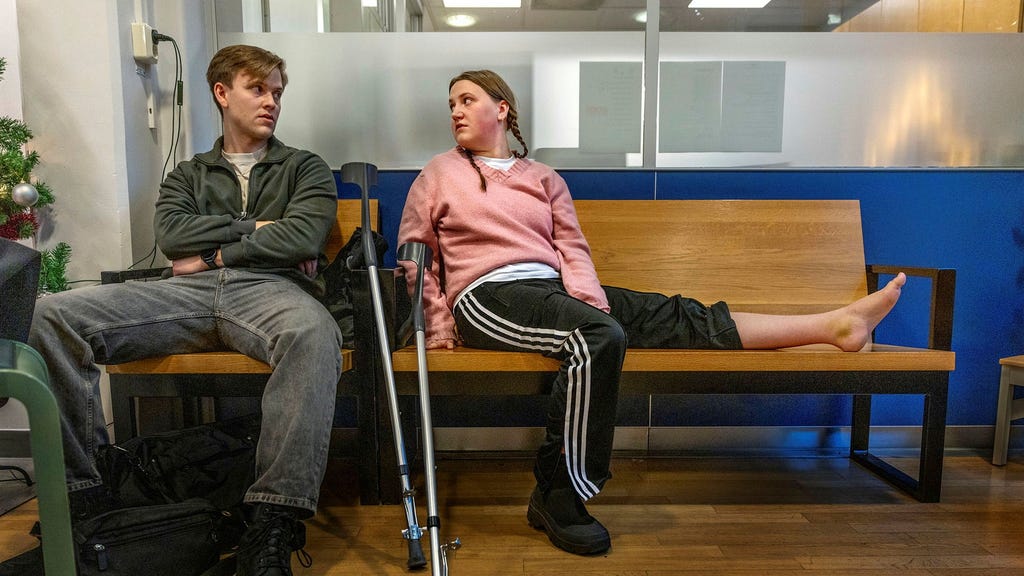A wave of ice-related injuries flooded Swedish hospitals during the New Year’s and Epiphany holidays, placing significant strain on emergency rooms and orthopedic departments. Emilia Aarna, one such casualty, slipped on ice while wearing high-heeled boots on New Year’s Eve, fracturing her ankle. Her experience reflects the surge in patients seeking treatment for similar injuries after a sharp drop in temperature around the holidays. Upon arrival at Södersjukhuset, a major hospital in Stockholm, Aarna found the emergency room crowded with individuals suffering from various ailments, including respiratory infections and orthopedic injuries. The hospital staff confirmed a noticeable peak in slip and fall accidents during this period, particularly when temperatures hovered around freezing point.
Södersjukhuset, equipped with one of the largest emergency departments in Northern Europe, experienced heightened pressure during the holiday season. Along with a surge in respiratory infections, the influx of orthopedic injuries like fractures and sprains further burdened the already strained system. Gips technician Calle Lantz described the period as ”peak season” for ice-related accidents, with over 70 patients requiring casting for foot, wrist, and elbow fractures in just a few days. Many of these cases originated from outside the region, highlighting the widespread impact of the icy conditions. The hospital’s emergency room physician, Johan Stormdal Starck, recounted a particularly busy New Year’s Day, treating 14 patients with slip and fall injuries. He emphasized the intense pain experienced by patients with ankle fractures, necessitating immediate attention and often requiring repositioning of the joint.
The increasing burden of ice-related injuries extended throughout the healthcare system, affecting not only emergency rooms but also other departments like radiology and surgery. Röntgensjuksköterskan Eric Lebri, a radiographer, highlighted the importance of quick and accurate assessment through X-rays to determine the extent of injuries. While local emergency clinics handled less severe cases, hospitals like Södersjukhuset concentrated on patients requiring surgery or more complex treatment. Caroline Lanté, another patient at Södersjukhuset, fractured her leg while retrieving a package a few days after New Year’s Eve. She underwent surgery and expressed gratitude for the prompt medical attention and pain relief she received, acknowledging the challenging yet efficient care provided during this demanding period.
The impact of this surge in injuries was felt across multiple regions in Sweden. Karolinska University Hospital, another major hospital in Stockholm, reported a significant increase in orthopedic patients even before the Christmas holidays. Caroline Hällsjö Sander, production director at Karolinska, stated that the hospital had to adjust its surgical capacity to accommodate the rise in urgent cases. Region Stockholm’s chief physician, Patrik Söderberg, acknowledged the general strain on emergency departments across the region, although bed availability was slightly better than usual. Meanwhile, Sahlgrenska University Hospital in Gothenburg and hospitals in Region Skåne reported manageable workloads, despite some increased pressure during the Epiphany weekend.
Despite the strain, stories of resilience and gratitude emerged from the affected patients. Caroline Lanté, while facing a long recovery, expressed deep appreciation for the immediate support and care she received, from bystanders who helped her into the ambulance to the medical professionals who treated her. Her experience, while highlighting the overwhelming demand placed on the healthcare system, also underscores the dedication and efficiency of the medical personnel. The quick response and effective pain management she received showcased the commitment to providing quality care even during peak periods.
The influx of ice-related injuries underscores the need for preventative measures and public awareness campaigns. Emphasizing the importance of appropriate footwear, cautious walking habits, and timely treatment of icy surfaces could significantly reduce the number of accidents. Furthermore, supporting local emergency clinics and hospitals by seeking appropriate levels of care for specific injuries can help streamline resources and ensure efficient treatment for everyone. The experiences of patients like Emilia Aarna and Caroline Lanté highlight both the challenges faced by healthcare systems during peak periods and the resilience and gratitude expressed by those who benefit from the tireless efforts of medical professionals.














